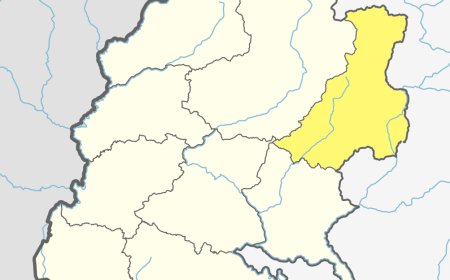Nepal's Himalayan Peaks: Exploring the Top 21 Himalayan Peaks.
Discover the ultimate Himalayan adventure in Nepal, from Everest to hidden gems promising a blend of culture, natural beauty, diverse landscapes and rich heritage.
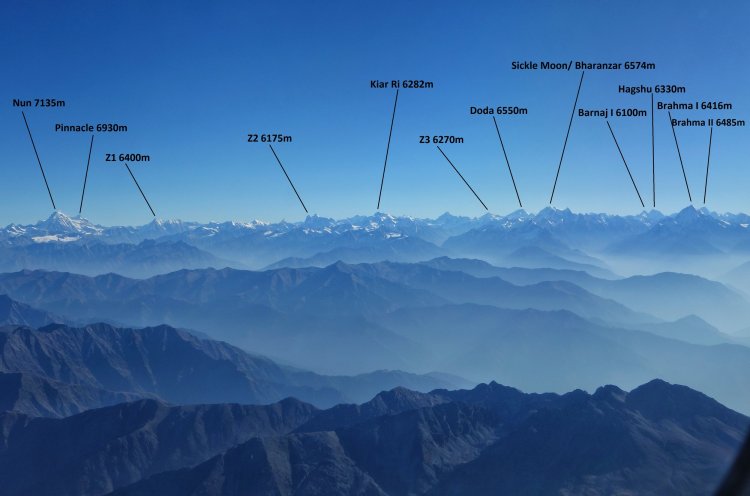
Introduction:
Nepal, a land of soaring peaks and breathtaking landscapes, is a veritable paradise for mountaineers and trekkers from around the world. Nestled within the heart of the Himalayas, this small but extraordinary country boasts some of the tallest and most iconic mountains on Earth. In this article, we embark on a journey to explore Nepal's formidable peaks, each with its own unique history, challenges, and allure. From the majestic heights of Mount Everest, the world's highest peak, to the serene beauty of Yala Peak, we'll discover the rich tapestry of Nepal's mountainous wonders.
-
Mount Everest
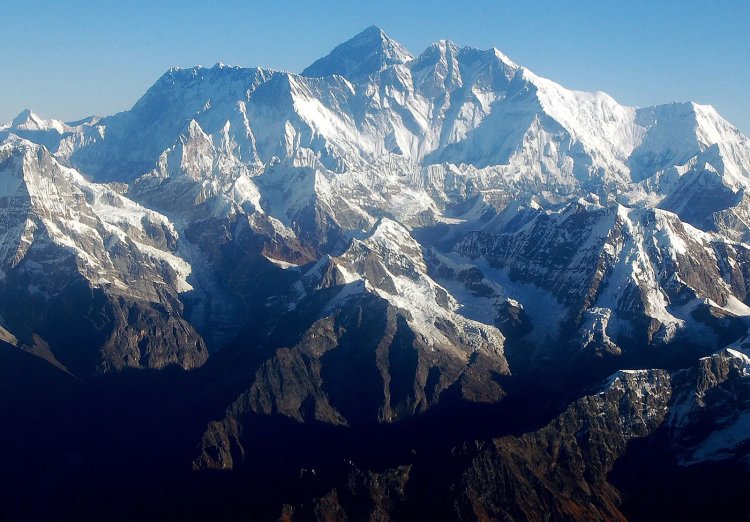
Height: 8,848.86 meters (29,031.7 feet)
District: Solukhumbu
Mount Everest is also known as "Sagarmatha" in Nepali and "Chomolungma" in Tibetan. Mount everest is located in Nepal. It is the tallest mountain on Earth and the highest point in the world. Mount Everest is the highest peak of Himalayan range. It is located at Solukhumbu district of Nepal. Climbing Everest is considered the ultimate achievement for mountaineers worldwide. The first successful people who climbed to mount everest was Tenzing Norgay Sherpa of Nepal and Sir Edmund Hillary of New Zealand and in 1953. It is 158 km far from capital city of nepal that is Kathmandu. It is said that about 800 people climb mount everest every year.
-
Kangchenjunga
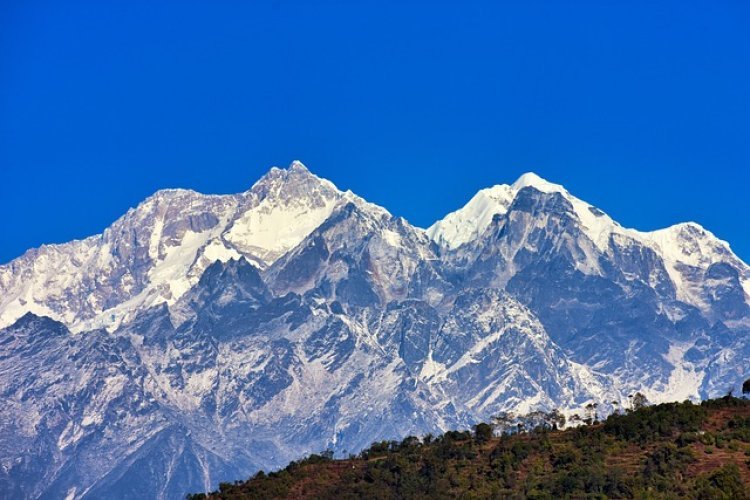
Height: 8,586 meters (28,169 feet)
District: Taplejung
Kangchenjunga is the third-highest mountain in the world and is located on the eastern Himalayas border of Nepal with the Indian state of Sikkim. It is located on Taplejung District of Nepal. It is 276 km far from capital city of nepal that is Kathmandu. It was first climbed on May 25, 1955, by Joe Brown and George Band as part of the 1955 British Kangchenjunga expedition. Kangchenjunga is known for its challenging terrain and breathtaking vistas.
-
Lhotse
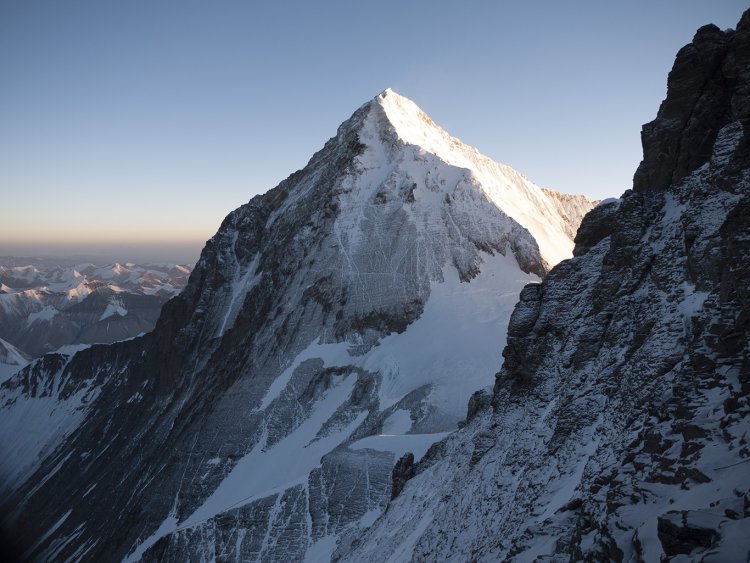
Height: 8,516 meters (27,940 feet)
District: Solukhumbu
Mount Lhotse is the fourth-highest mountain in the world and is situated very close to Mount Everest sharing part of its south face. It is located on Solukhumbu district of Nepal. The meaning of Lhotse is "South Peak" in Tibetan. The main summit of Lhotse is on the border between of Tibet Autonomous Region of China and the Khumbu region of Nepal. Climbers often attempt Lhotse as part of an Everest expedition. The South Col, a high col between Everest and Lhotse, is a critical point in the ascent of both peaks.
-
Makalu
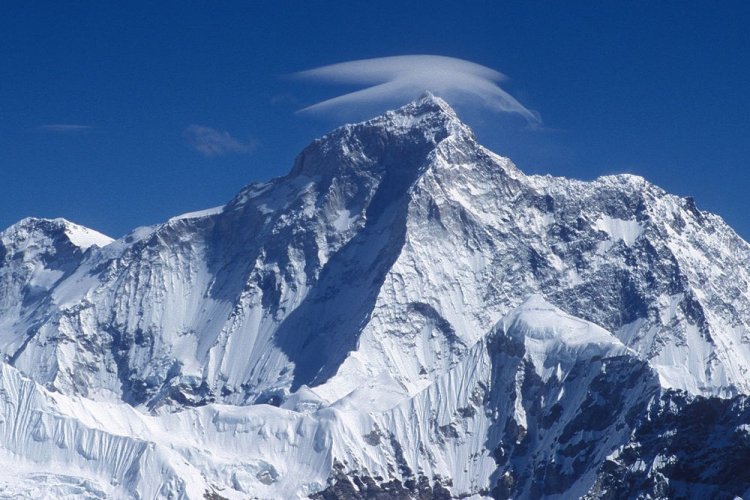
Height: 8,485 meters (27,825 feet)
District: Sankhuwasabha
Makalu is the fifth-highest mountain in the world and is part of the Mahalangur range, located southeast of Mount Everest. It is located on Sankhuwasabha District in the Koshi Zone of north-eastern Nepal. It is known for its pyramid-shaped peak and one of the challenging mountain for trek. The mountain's remote location and difficult terrain make it a formidable challenge for even experienced mountaineers. It is 173 km far from capital city of nepal that is Kathmandu
-
Cho Oyu
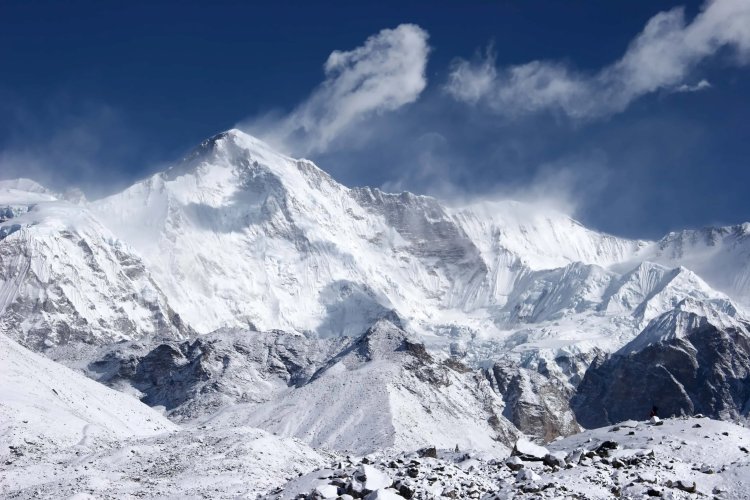
Height: 8,188 meters (26,864 feet)
District: Solukhumbu
Cho Oyu, meaning "Turquoise Goddess" in Tibetan, is the sixth-highest mountain globally and stands on the Nepal-China border. It is considered one of the more "accessible" eight-thousanders, with a relatively less technical climb compared to its peers. Many climbers use Cho Oyu as a preparatory climb before attempting more challenging peaks.
-
Dhaulagiri
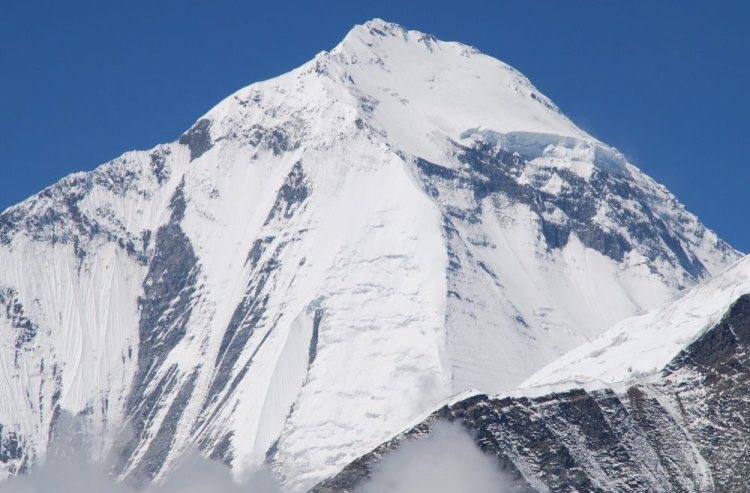
Height: 8,167 meters (26,795 feet)
District: Magdi and Mustang
Dhaulagiri is the seventh-highest mountain in the world and is part of the Dhaulagiri range. Even one zone is located name of this Himalaya. Dhaulagiri Region is mainly within the Myagdi district of western Nepal. It is known for its steep and challenging climbs, with a formidable south face.The people to first climb this mountain are Nawang Dorje , Nima Dorje (both Nepal/Sherpa) , Kurt Diemberger (Austria), Peter Diener (Germany), Ernst Forrer and Albin Schelbert (both Switzerland)at 13 May 1960.The region surrounding Dhaulagiri is rich in biodiversity and is home to various ethnic groups. It is one of the best mountain where foreigner love to travel.
-
Manaslu
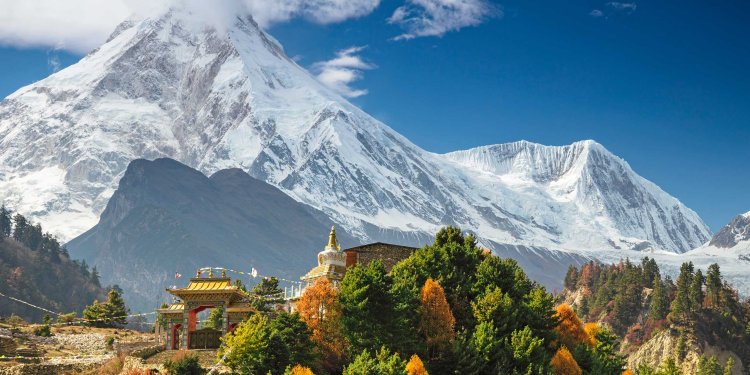
Height: 8,163 meters (26,781feet)
District: Gorkha
Manaslu, also known as the "Mountain of the Spirit," is the eighth-highest mountain in the world and is located in the Gorkha district of Nepal. Climbing Manaslu requires a special permit, and the region is known for its diverse flora and fauna. The Manaslu Circuit trek offers stunning views of the peak and is a popular alternative to the Annapurna Circuit.
-
Annapurna
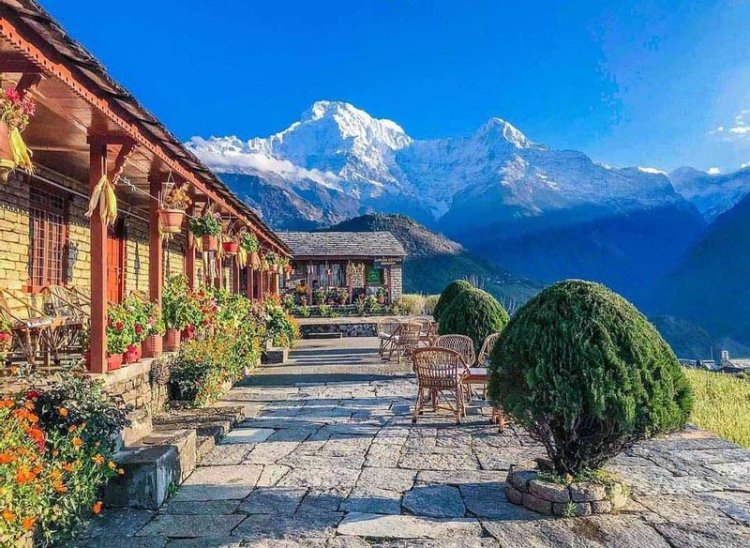
Height: 8,091 meters (26,545 feet)
District: Kaski
Annapurna is the tenth-highest mountain in the world and is part of the Annapurna range. it ranks as one of the most dangerous mountain.The person who climbed this mountain at first was Maurice Herzogled from French at 1950. Annapurna is a subrange of the Himalaya. It's known for its challenging mountain for trekking and the stunning Annapurna Sanctuary, a glacial basin surrounded by towering peaks. The Annapurna region is also famous for its diverse landscapes and vibrant culture.
-
Gyachung Kang
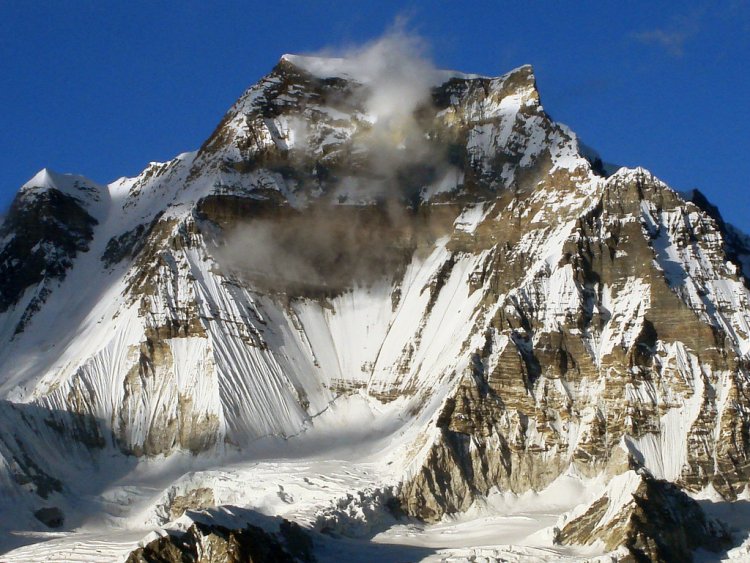
Height: 7,952 meters (26,089 feet)
District: Mahalangur
Gyachung Kang is located near Mount Everest and is the 15th highest mountain of world. Gyachung Kang is a part of the massif of the Himalayas called the Mahalangur Himar. It's known for its challenging climb, with steep and technical sections. It is considered that northern part of this mountain is very difficult to climb. The mountain is not as frequently climbed. But It is said that It offers a rewarding experience for seasoned mountaineers. It is said that this mountain was first climbed at the end of 20th century, in 1999.
-
Ama Dablam
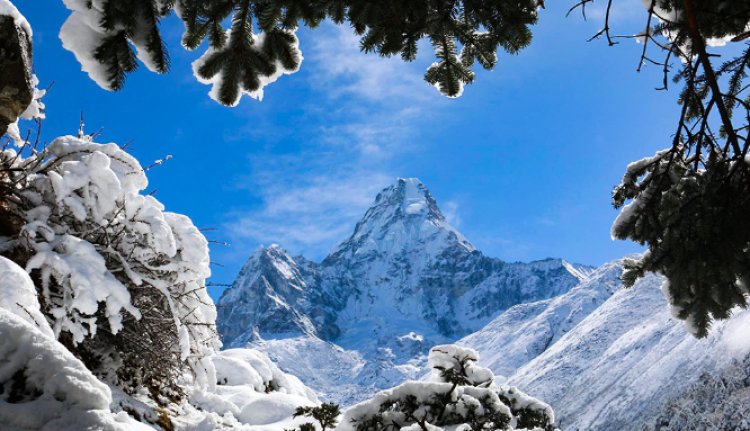
Height: 6,812 meters (22,349 feet)
District: Solukhumbu
Ama Dablam is located on Koshi province of nepal and It is mountain in the eastern Himalayan range of Koshi Province. It covers 150 KM area. The meaning of Ama Dablam in Tibetan is "Mother's Necklace". It is a visually striking peak in the Khumbu region. It’s distinctive pyramid shape and steep faces make it one of the most iconic mountains in the world. Climbing Ama Dablam is a challenging endeavor that requires technical skill and acclimatization.
On the 13th of March in 1961, Ama Dablam, the stunning Himalayan peak, was conquered for the first time by a team comprising of Mike Gill from New Zealand, Barry Bishop from the United States, Mike Ward from the United Kingdom, and Wally Romanes from New Zealand. Their successful ascent was achieved via the challenging Southwest Ridge route.
-
Machhapuchhre
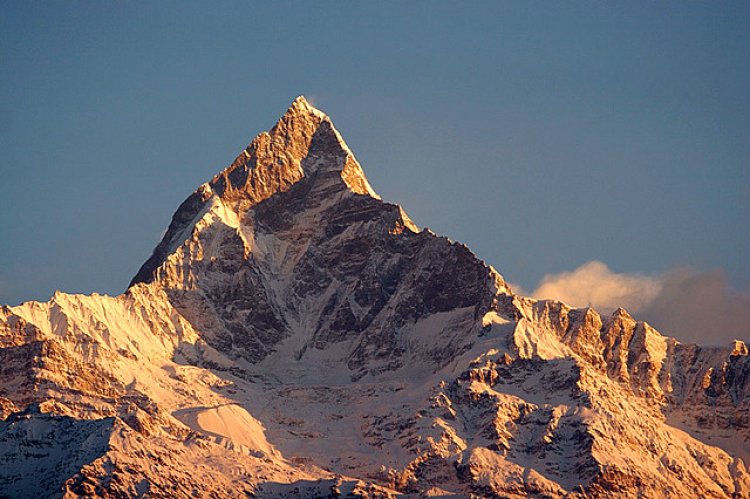
Height: 6,993 meters (22,943 feet)
District: Kaski
Machhapuchhre, often referred to as "Fishtail Mountain", is about 16 miles north of Pokhara, a famous place for people who love hiking and climbing. The mountain is around 50 million years old, created when two big pieces of Earth's crust smashed into each other.
Climbing Machapuchare is not allowed since 1962. People want to protect the mountain because they think it's very special. A long time ago, a British team tried to climb it but didn't reach the top because they promised the King of Nepal they wouldn't. The mountain is sacred to the local people, and they connect it with Lord Shiva, a major god in Hinduism. Lord Shiva is known for making and changing the world.
So, Machapuchare is a unique and important mountain that's off-limits for climbers to keep its sacredness and beauty safe. It's a special place for both nature lovers and those who believe in its spiritual significance.
-
Mera Peak
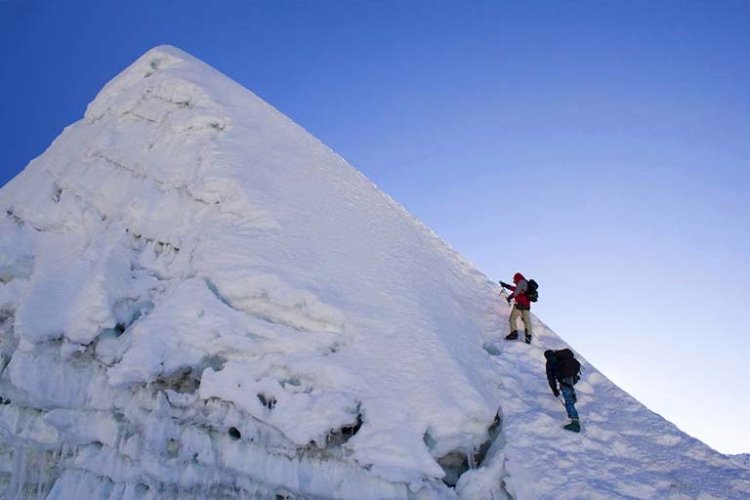
Height: 6,476 meters (21,246 feet)
District: Solukhumbu
Mera Peak is one of the highest trekking peaks in Nepal, standing at 6,476 meters (21,247 feet) high. It's classified as a trekking peak, which means it's a great option for adventurous trekkers looking to experience some high-altitude climbing. Mera Peak has three main summits: Mera North (6,476 meters), Mera Central (6,461 meters), and Mera South (6,065 meters). There's also a smaller "trekking summit" that's not marked on many maps.
What makes Mera Peak special is the breathtaking 360-degree views it offers. From the top, you can see five of the world's highest mountains over 8,000 meters: Mount Everest (8,848 meters), Kangchenjunga (8,586 meters), Lhotse (8,516 meters), Makalu (8,485 meters), and Cho Oyu (8,201 meters), along with many other peaks in the Khumbu Region.
Although the height of Mera Peak is sometimes listed as 6,654 meters (21,831 feet), it's commonly known as one of the highest trekking peaks, making it a thrilling destination for trekkers and climbers.
-
Island Peak
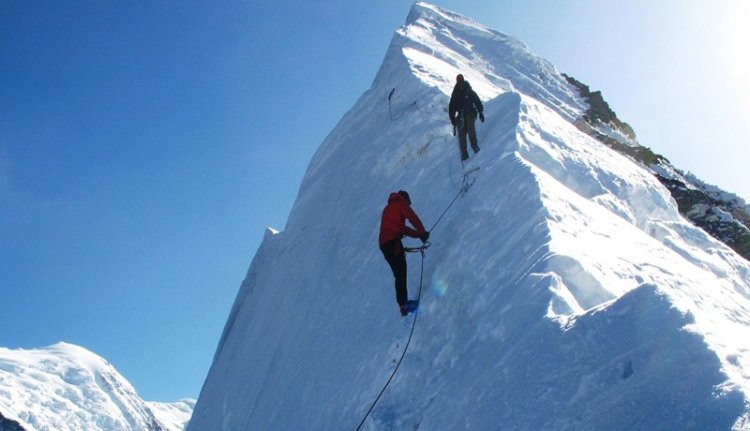
Height: 6,189 meters (20,300 feet)
District: Solukhumbu
Island Peak, also known locally as Imja Tse, is a mountain located in Sagarmatha National Park in the Himalayas of eastern Nepal. The name "Island Peak" was given to it in 1953 by members of a British Mount Everest expedition. They called it "Island Peak" because, when viewed from Dingboche, it looks like an island surrounded by a sea of ice. In 1983, the peak was officially renamed Imja Tse, but many people still refer to it as Island Peak because it's a more popular and recognizable name.
The peak is essentially an extension of the ridge that comes down from the southern end of Lhotse Shar. To climb Island Peak, there are two common options. You can start from a base camp at 5,087 meters (16,690 feet) called Pareshaya Gyab and begin the climb between 2 and 3 A.M. Another popular choice is to go up to High Camp at around 5,600 meters (18,400 feet) to make the summit day easier in terms of effort and time. Island Peak is a challenging yet rewarding destination for climbers and trekkers in the region.
-
Lobuche East
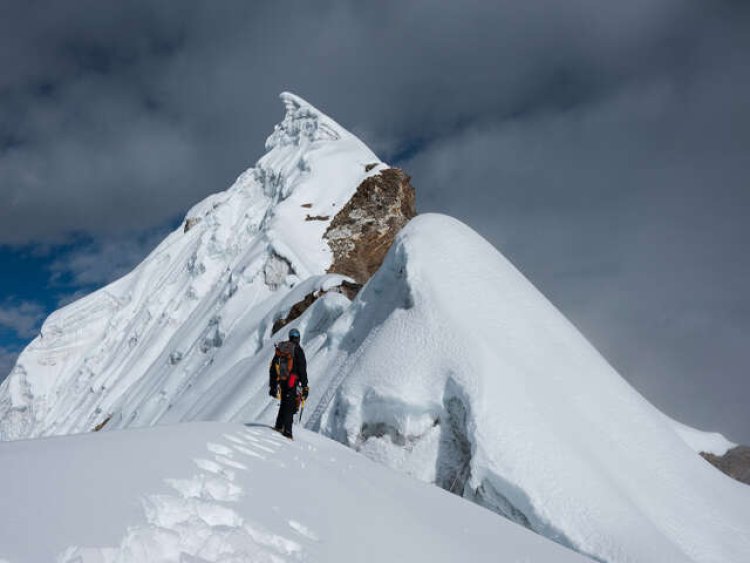
Height: 6,119 meters (20,075 feet)
District: Solukhumbu
Lobuche East is a prominent mountain in the Khumbu region of Nepal, standing at an elevation of 6,119 meters above sea level. It is considered significant but is also one of the more popular and relatively easier peaks to climb in the area.
There are two main peaks in the Lobuche region: Lobuche East and Lobuche West. To climb Lobuche East, climbers need to obtain a permit from the Nepal Mountaineering Association (NMA). The NMA classifies Lobuche East, with an elevation of 6,119 meters, as a "trekking peak." On the other hand, Lobuche West, which is slightly higher at 6,145 meters, is categorized as an "expedition peak."
Lobuje West, the higher of the two peaks, was first successfully climbed in 1955 via the South Shoulder route. The Lobuche region is a popular destination for mountaineers and trekkers due to its accessibility and the stunning landscapes of the Khumbu region.
-
Cholatse
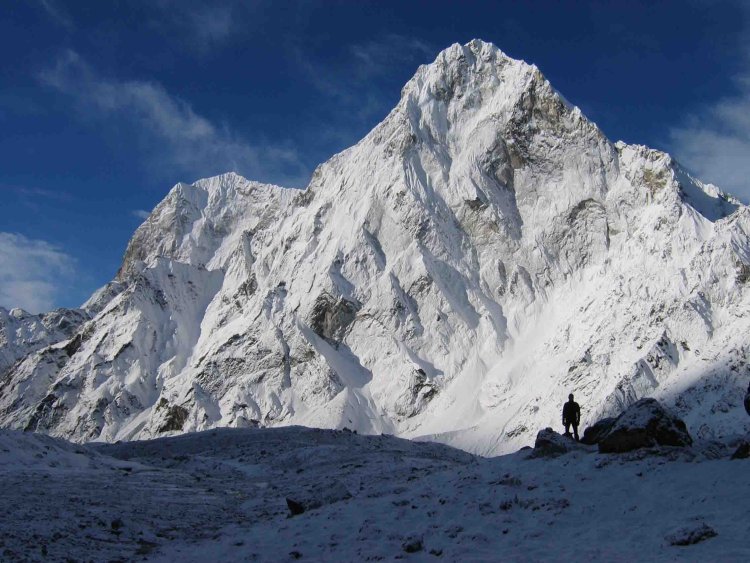
Height: 6,440 meters (21,129 feet)
District: Solukhumbu
Cholatse, also known as Jobo Lhaptshan, is a mountain located in the Khumbu region of the Nepalese Himalaya. It's a striking peak with a long ridge connecting it to another mountain called Taboche, which has an elevation of 6,501 meters.
Travelers on the trail to Mount Everest base camp can catch sight of Cholatse's impressive north and east faces from the village of Dughla. Notably, there's a lake situated just below the pass to the east of Cholatse. In Tibetan, 'cho' means lake, 'la' means pass, and 'tse' means peak, so the name "Cholatse" literally translates to "lake pass peak."
Cholatse made its mark in climbing history when it was first successfully ascended via the southwest ridge on April 22, 1982. The team that achieved this feat included climbers Vern Clevenger, Galen Rowell, John Roskelley, Bill O'Connor, and Peter Hackett. Subsequently, in 1984, the challenging north face of Cholatse was also successfully scaled by climbers, adding to the mountain's mountaineering legacy.
-
Pisang Peak
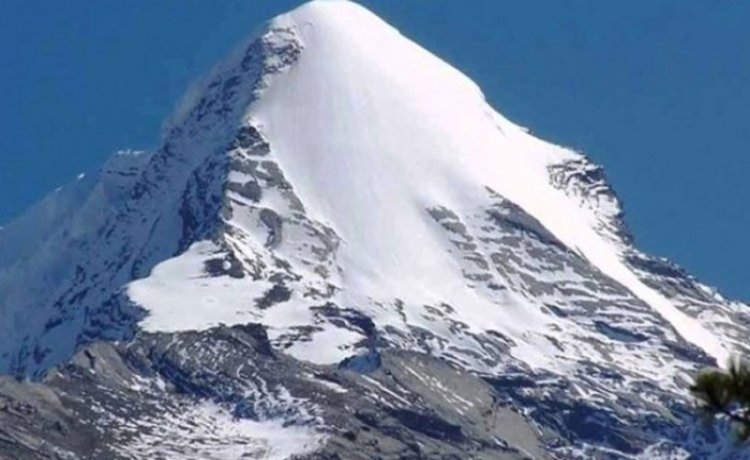
Height: 6,091 meters (19,983 feet)
District: Manang
Pisang Peak is located in the Manang district of Nepal in the northern part of the country. It's positioned between the mighty Annapurna I and Manaslu mountains. At 6,091 meters, Pisang Peak is one of the more straightforward peaks to climb in the Annapurna region, and it's a popular choice for trekkers.
Pisang Peak's climbing history goes back to 1955 when a German expedition successfully reached its summit. Since then, it has gained popularity as a climbing destination.
Despite being considered one of the easier peaks in the Himalayan region, climbers should still be in good physical shape and health. The journey to the summit offers a captivating experience, with diverse ecosystems, rich cultures, and stunning landscapes.
The climb typically begins from Pisang village, leading through sparse forests and pastures to reach the base camp at a place called Kharka, which is situated at an altitude of 4,380 meters. The ideal spot for setting up the base camp is at this location. From there, climbers ascend to a higher camp at 5,400 meters, which is located on the South-West Ridge. Pisang Peak provides an accessible and rewarding adventure for those looking to explore the Himalayas.
-
Yala Peak
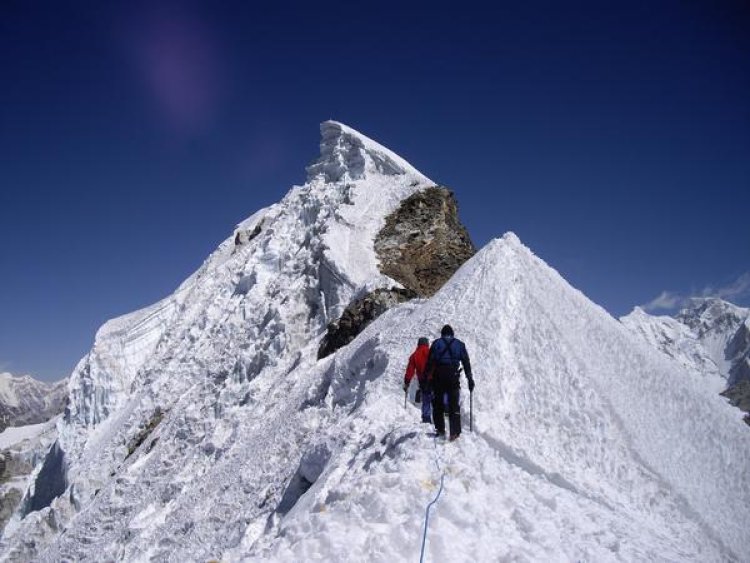
Height: 5,500 meters (18,000 feet)
District: Langtang
Yala Peak is a mountain with an elevation of 5,500 meters, situated in the Langtang Region, north of Kathmandu, Nepal. The Nepal Mountaineering Association categorizes it as a trekking peak, which means it's relatively accessible and non-technical to climb.
Climbing Yala Peak offers a fantastic adventure that typically spans two weeks, taking trekkers through the beautiful Langtang National Park in Nepal. The journey culminates in an ascent of Yala Peak, which stands near the Tibetan border and to the northeast of Kyangin Gompa, a village at 3,870 meters.
This climb is considered non-technical, making it suitable for trekkers with some mountaineering experience. It can typically be completed in three days from Kyangin Gompa, using a high base camp known as Yala Kharka at 4,800 meters. The climb may also include an extra day for unfavorable weather conditions.
One of the highlights of reaching the summit of Yala Peak is the breathtaking view it offers of Shishapangma, the highest mountain in Tibet, which stands at an impressive 8,013 meters. This adventure is an excellent way for trekkers to explore the Langtang region and experience the thrill of a Himalayan summit.
-
Chulu East
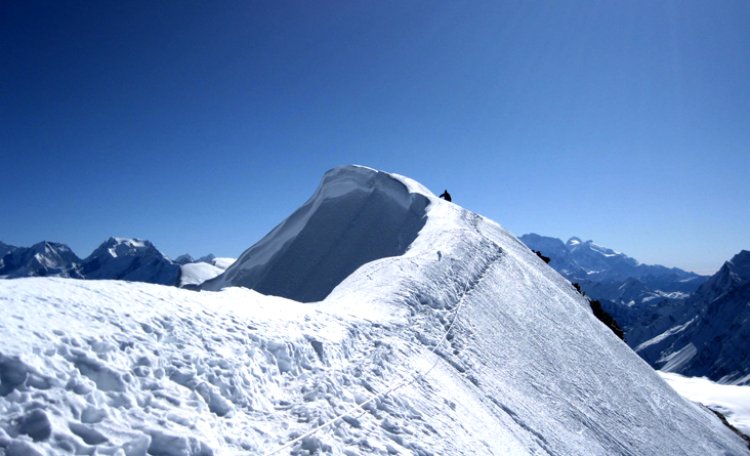
Height: 6,584 meters (21,595 feet)
District: Manang
Chulu East Peak, standing at an elevation of 6,584 meters, is one of the relatively easier peak climbing options in the Annapurna region. It is part of the Chulu massif, which rises to the north of the Marsyangdi Khola (a river) in the Manang area and belongs to the larger Damodar Himal.
The first successful ascent of Chulu East was achieved by a Japanese expedition in 1952, led by Masataka Takagi and his team.
Chulu East is one of several peaks in the Chulu range and is a well-liked destination for climbers in the Annapurna region. Climbing Chulu East is not without challenges, as it involves steep sections and requires technical climbing skills. However, the effort is rewarded with breathtaking panoramic views of the Annapurna and Manaslu mountain ranges. This climb offers an exciting and rewarding mountaineering experience for those looking to explore the Annapurna region's stunning landscapes.
-
Ramdung Go Peak
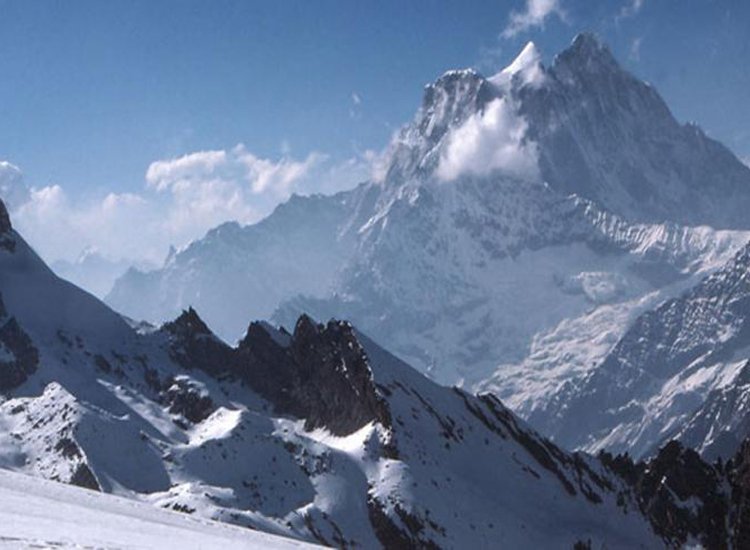
Height: 5,925 meters (19,473 feet)
District: Ramechhap
Ramdung Peak, situated in the Rolwaling Himalaya, is one of the highest trekking peaks in the region, with an elevation of 5,925 meters. It's a favored destination for trekkers in the area due to its natural beauty and relative accessibility.
Ramdung Peak is found on the border of Khumbu and the Rolwaling Valley, offering a unique location for adventure. Its remote location south of the Tashi Lapcha Pass, which connects to the Khumbu region, makes it less frequented by climbers, creating a peaceful and less crowded trekking experience.
Climbing Ramdung Peak provides trekkers with the opportunity to enjoy panoramic views of numerous majestic mountains, including Mt. Gaurishankar (7,134 meters), Mt. Ama Dablam (6,856 meters), Mt. Cho Oyu (8,201 meters), Mt. Nuptse (7,861 meters), and the iconic Mt. Everest (8,848 meters), along with several other stunning peaks. This trek offers a serene and awe-inspiring journey through the pristine landscapes of the Rolwaling Valley, making it an attractive destination for nature and mountain enthusiasts.
-
Kwangde Peak
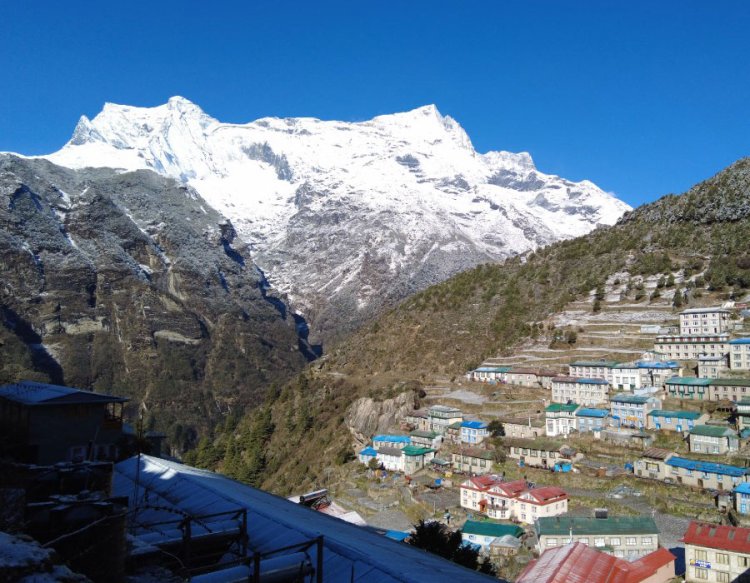
Height: 6,011 meters (19,721 feet)
District: Solukhumbu
Kwangde Peak, situated in the Khumbu region of Nepal, offers a challenging ascent for experienced mountaineers. Known for its technical terrain, this peak provides incredible views of the Khumbu region, including iconic peaks like Mount Everest and Lhotse.
Climbing Kwangde Peak takes trekkers through Sherpa settlements, valleys, and forested landscapes, eventually leading to the summit of the peak. The reward is the breathtaking panoramic views of mountains such as Ama Dablam (6,856 meters), Makalu (8,463 meters), Everest (8,848 meters), Cho Oyu (8,188 meters), and the peaks of the Rolwaling region.
Kwangde Peak, also known as Kangde Ri Peak, is a popular trekking peak in the Khumbu region, with an elevation of 6,011 meters. It's an adventurous climb that can be approached from both its north and south summits. The north summit, called Kwangde Nup, can be accessed from the base camp in the Lumding Himal, which is part of the Rolwaling Himalaya range located above the Bhote Koshi River and to the southwest of Namche Bazaar. Climbing Kwangde Peak is a thrilling and rewarding adventure for those seeking the challenge of the mountains in the Khumbu region.
-
Langsisa Ri
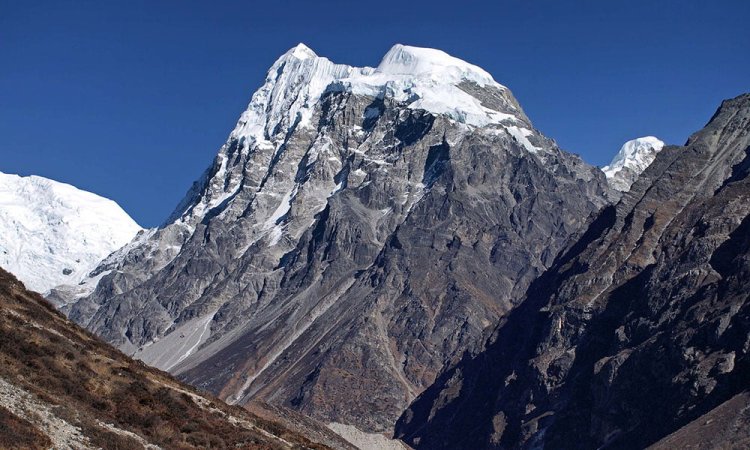
Height: 6,427 meters (21,086 feet)
District: Sankhuwasabha
Langshisa Ri is located in the remote Sankhuwasabha district and is part of the Langtang region. It offers a challenging climb with technical sections, making it suitable for experienced mountaineers seeking a less frequented peak. The summit offers breathtaking views of the Langtang Lirung and other surrounding peaks.
These mountains, each with their unique characteristics and challenges, contribute to Nepal's reputation as a premier destination for mountaineers and trekkers from around the world. They offer not only incredible natural beauty but also opportunities for adventure and personal achievement.
Conclusion:
Nepal's mountains, a testament to the indomitable spirit of human exploration and adventure, offer much more than just physical challenges. They provide a glimpse into the diverse cultures, traditions, and the extraordinary beauty of the Himalayan region. From the iconic summit of Mount Everest to the remote allure of Langsisa Ri, each peak tells a story of courage, perseverance, and the enduring human quest to conquer the heights. As visitors and adventurers continue to be drawn to these remarkable peaks, Nepal remains a beacon for those seeking the ultimate adventure in the world of mountaineering. The mountains of Nepal are not merely geological giants; they are living legends of human determination and the unyielding call of the wild.
What's Your Reaction?





























































































